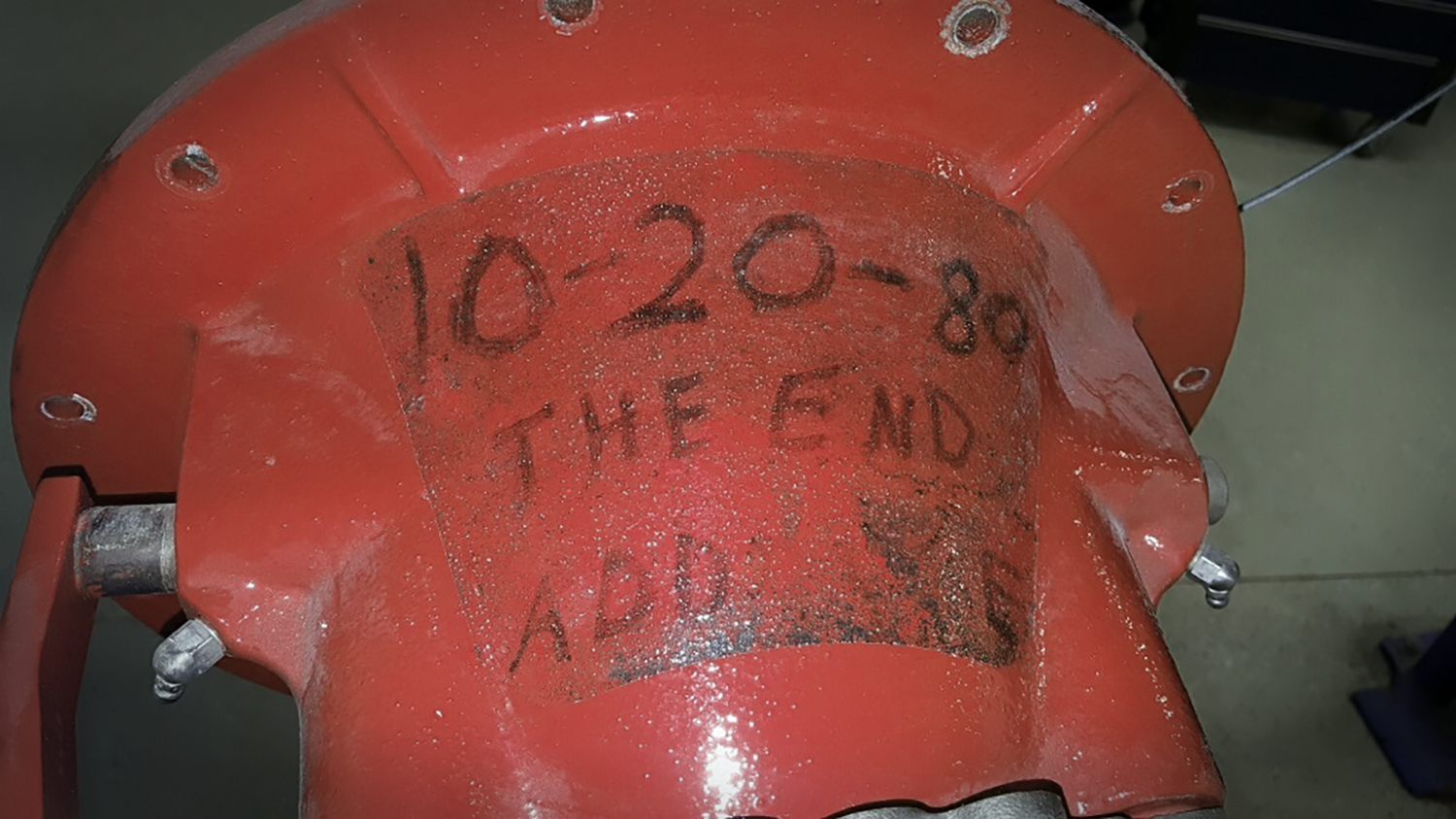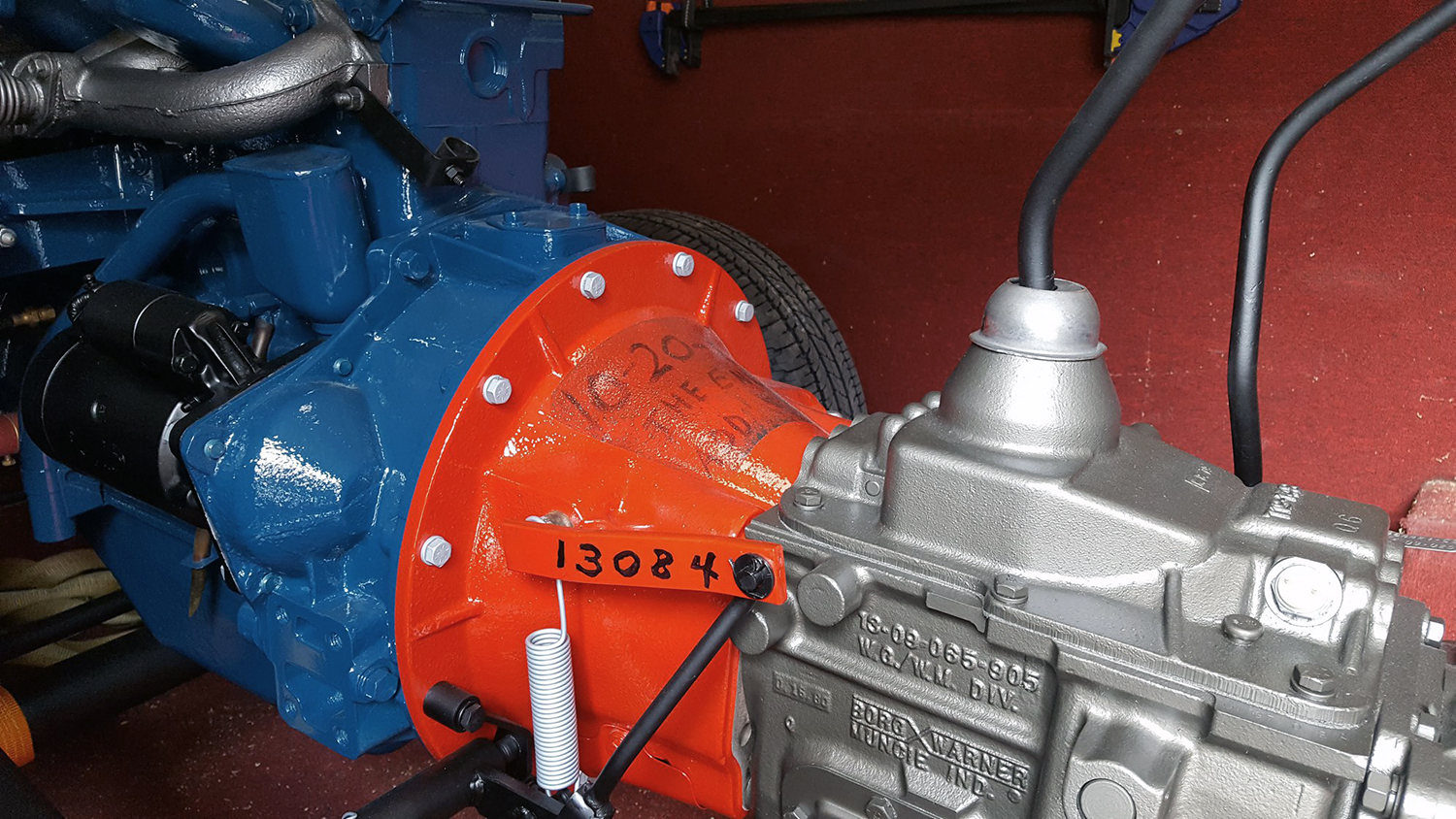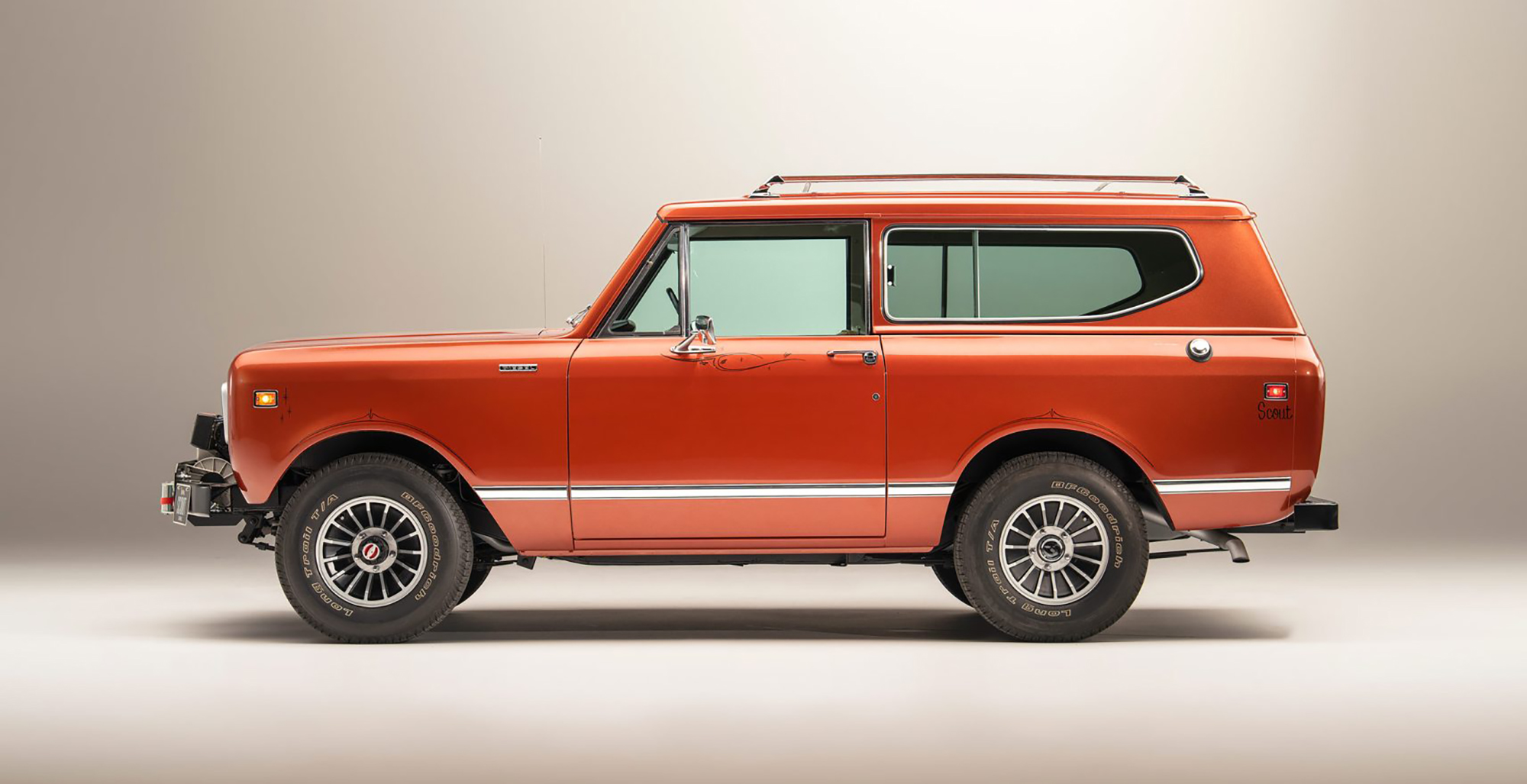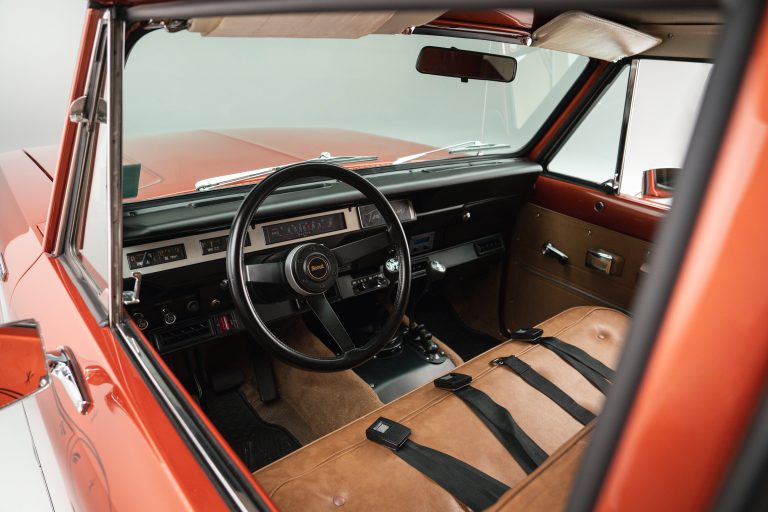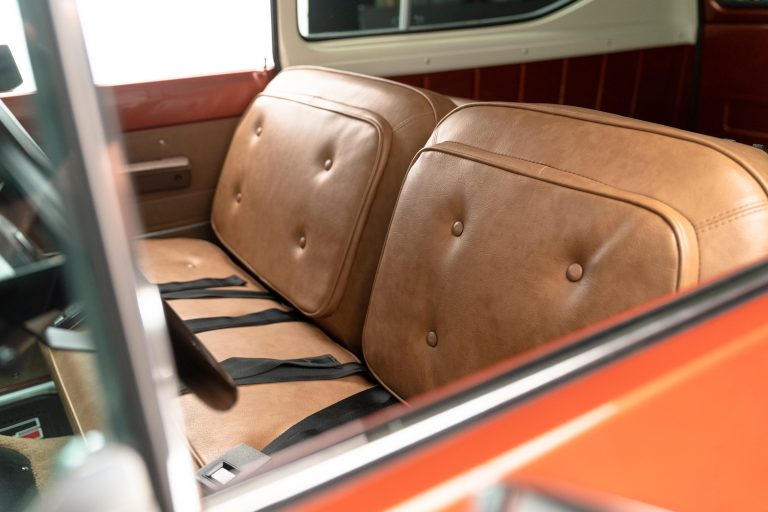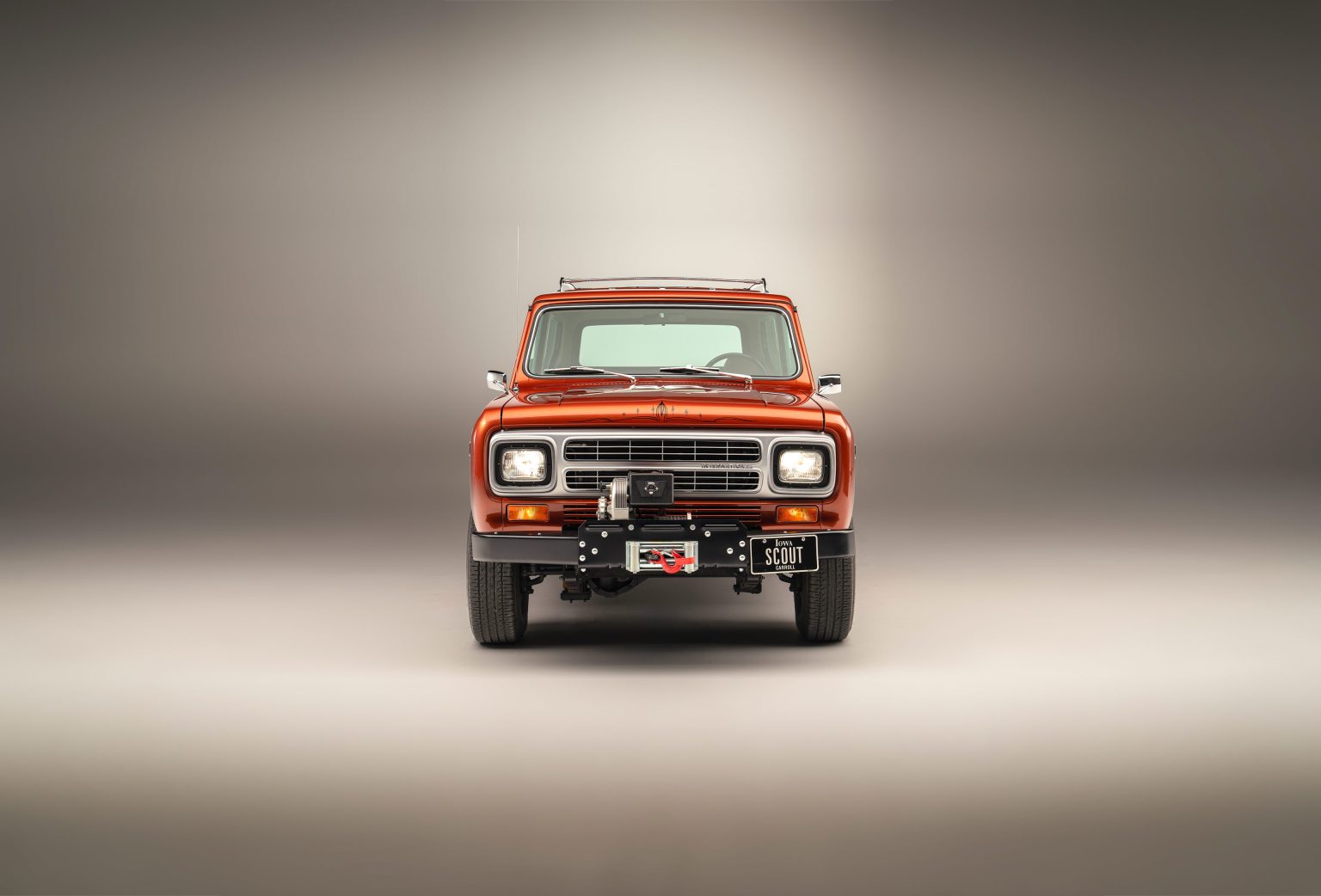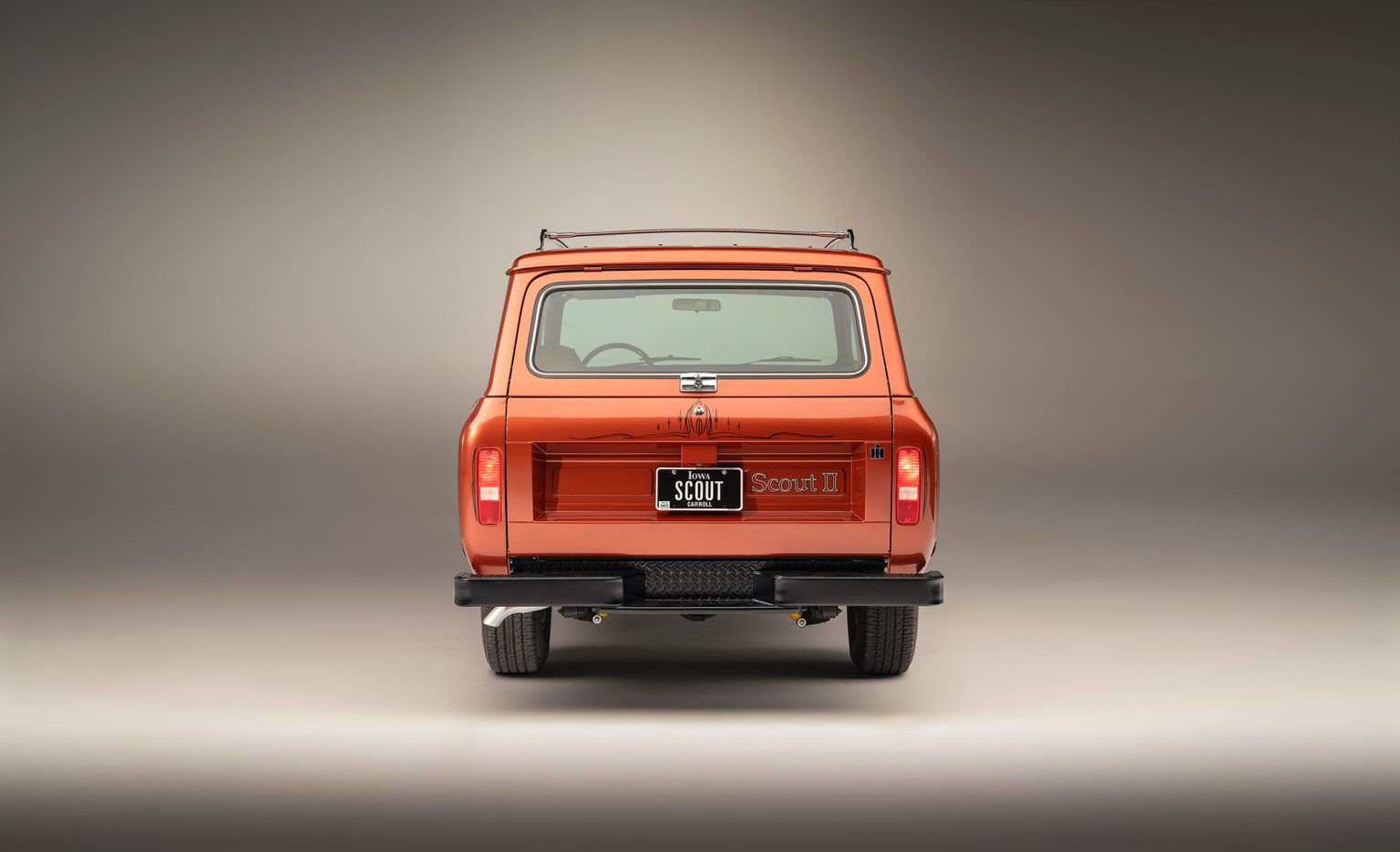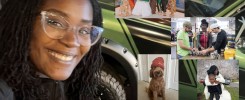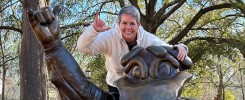TEXT BY: CHRIS HUNTER PHOTOS: SCOUT MOTORS & MIKE BOLTON
Over 500,000 Scout vehicles were built before production ended in 1980. This is the story of the last Scout vehicle to leave the factory.
On Monday, October 21, 1980, a Scout II™ with lustrous Tahitian Red paint trundled down the production line in Fort Wayne, Indiana. It was fitted with air conditioning and was upgraded to the ‘Deluxe’ interior, with a plush bench seat in Sierra Tan.
As the final assembly took place, a line worker with a keen sense of pathos took a marker pen to the transmission bell housing: “10-20-80 The End.”
We don’t know the identity of that person, but they knew this vehicle would become the Last Scout. And when it reached the end of the line the next day, the brand as we knew it did too.
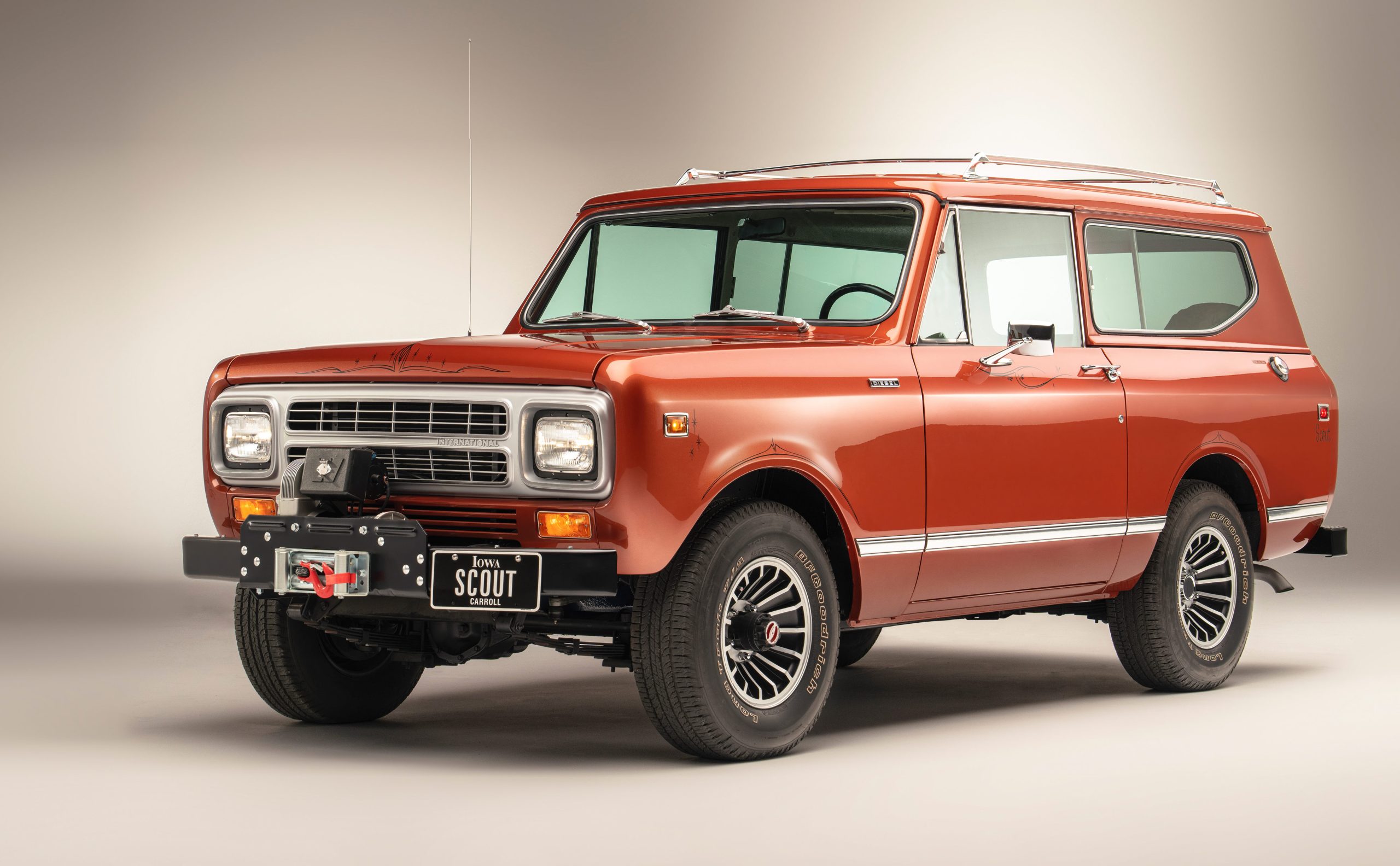
The Scout II was shipped to Mary Garst of Iowa, a cattlewoman whose rapier-sharp intellect won her a seat on several boards—including the Chicago Federal Reserve Board and the board of International Harvester.
The Scout truck served Mary and her husband Stephen well, transporting them around the 5,500 acres of family land in the Middle Raccoon River watershed. Fitted with an 8,000-pound Warn 8274 winch on a Warn Classic bumper, by 2015 it had clocked up almost 60,000 miles.
By this time, the Garsts had gifted their estate to a nonprofit land trust, the Whiterock Conservancy. The Scout’s tenure on the land was coming to an end, and that’s when it caught the eye of Iowa local Mike Bolton.
"If you like this, you need to see the one in the garage at my house. It's the last one made."
Steve Garst
Mike has lived down the road in Glidden, Iowa (pop. 1,154) for 45 years. He’s a well-known identity on the classic International Harvester scene in the Midwestern U.S.
He bought his first Scout in 1987: “I liked Scouts when they were building them,” he tells us. “But by the time I thought I could afford one, they were all rusting away in Iowa. So, I’d given up hope.”
Then Mike visited family in Arizona and spotted a rust-free 1980 Scout II. He drove it 1,300 miles home over the Fourth of July weekend, caught the bug, and became a regular on the Scout vehicle Gatherings scene.
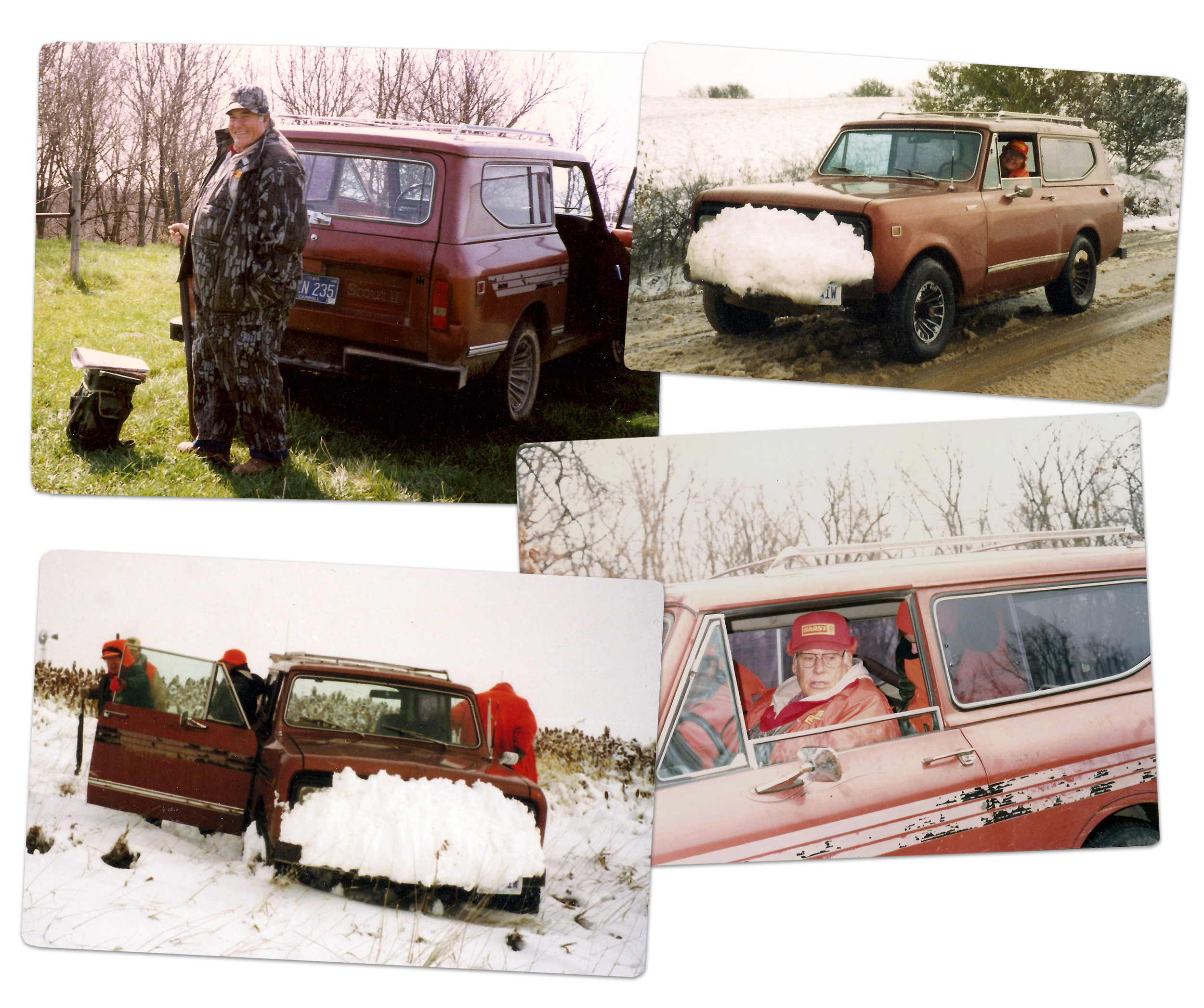

Mike first encountered the Last Scout in 1996, entirely by accident. He went to look at a blue Scout diesel just 15 miles from his house, parked up at the Garst Company fertilizer plant office in Coon Rapids. Mike’s son was 14 then, and it sounded like the perfect candidate for a father-and-son restoration project.
“Steve Garst told me, ‘If you like this, you need to see the one in the garage at my house. It’s the last one made’,” says Mike. He knew of the Last Scout, not least because it had just been featured in an 18-page article about Scouts in the prestigious magazine Collectible Automobile.
Over the next seven years, Mike regularly visited with the Garst Family, letting them know he was interested in the Last Scout, until finally in November of 2003, he and the family came to an agreement, and the keys changed hands.
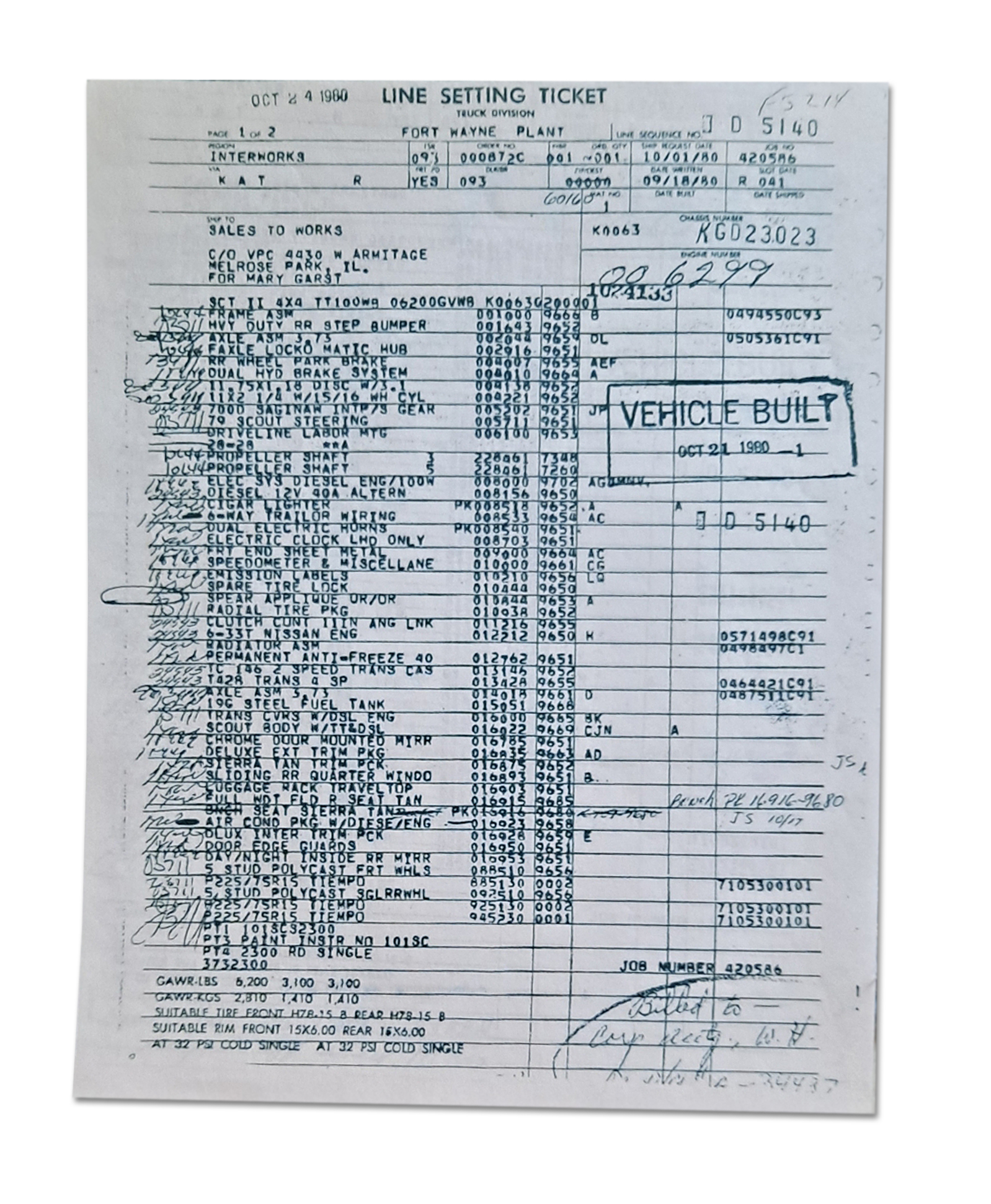
Like most Scouts built in 1980, this one used the Nissan SD33T engine, a turbocharged 198ci straight-six diesel, mated to a four-speed manual transmission. Some of the trim was missing, the grille had been broken and replaced, and the Craig AM/FM radio was dead. But the truck had been used for hunting and farming, and its condition could have been much worse.
The big decision was whether to restore the Scout truck. After much deliberation, Mike decided it was time to pull the trigger. He contacted Joe Stitz and Wyatt Deist of Resurrection Rides, a well-regarded local specialist.
Work started in the fall of 2015, and since Mike lived only 15 miles away and knew the history of the vehicle intimately, he was able to ensure that the right decisions were always made—even if they required a compromise of sorts.
After photographing and documenting the Scout II, Resurrection Rides began the tear-down. “The Scout is surprisingly solid in many areas but rough in other areas,” they reported at the time. “Not bad considering all the action this thing has seen over the years.”
“Everyone who stops in the shop has a story of driving it or riding in it, or a story of something that happened to it. If this Scout could only talk.”
One of the first jobs was to repair and straighten the frame. It was sandblasted to remove rust and crud, then finished with an epoxy sealer and painted flat black. The engine and transmission were soda blasted and repainted, and towards the end of 2016, everything was ready to be fitted back into the chassis.
Over the next few months, Resurrection Rides media blasted and repaired the body, removing dents and rust and straightening everything back to factory spec. The bare chassis and drivetrain made a brief sojourn to the Red Power Roundup show in Des Moines, while the body was treated with epoxy sealer followed by three coats of primer. And while it was on the rotisserie, the entire underside of the body was treated to a coating of bed liner.
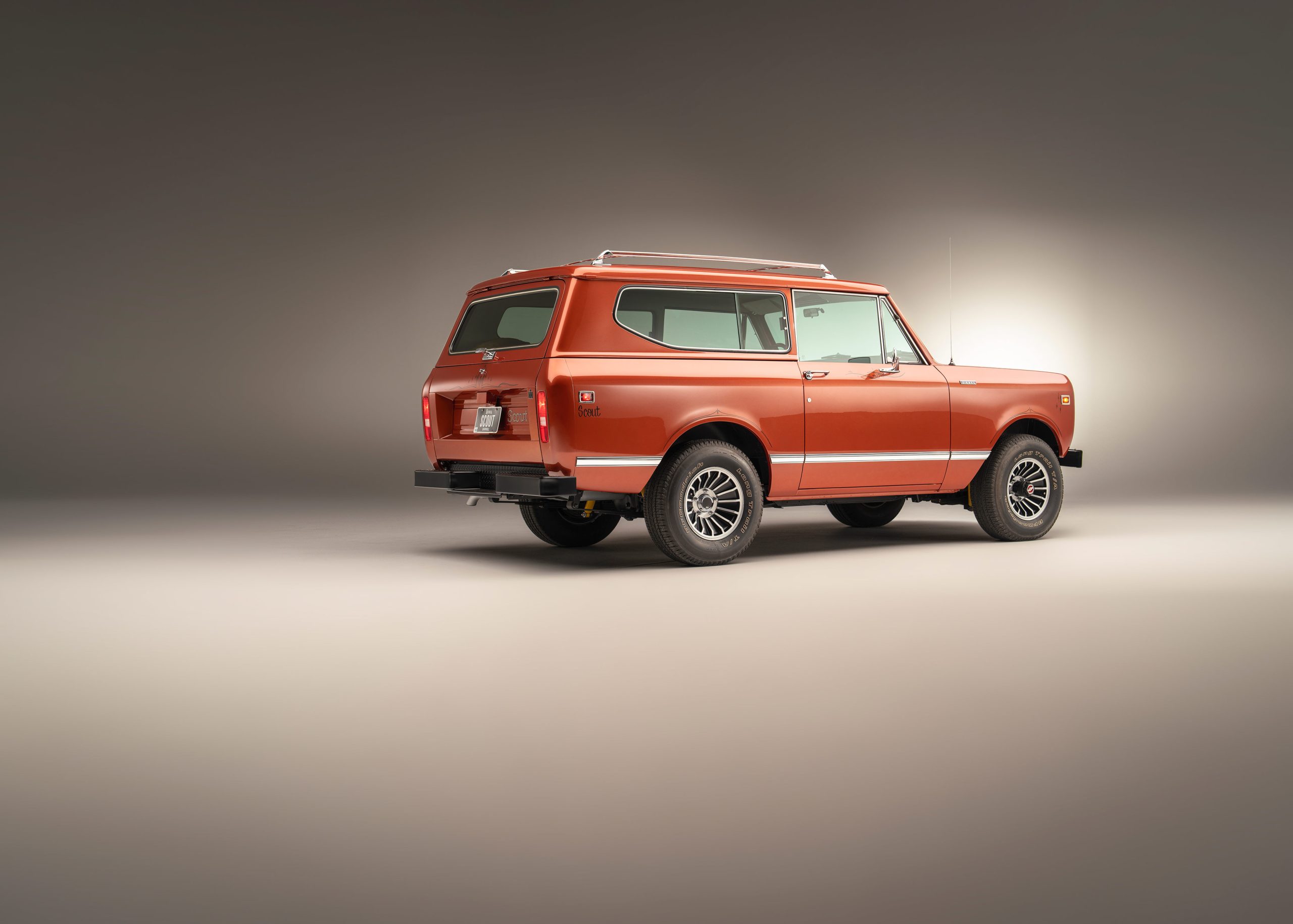
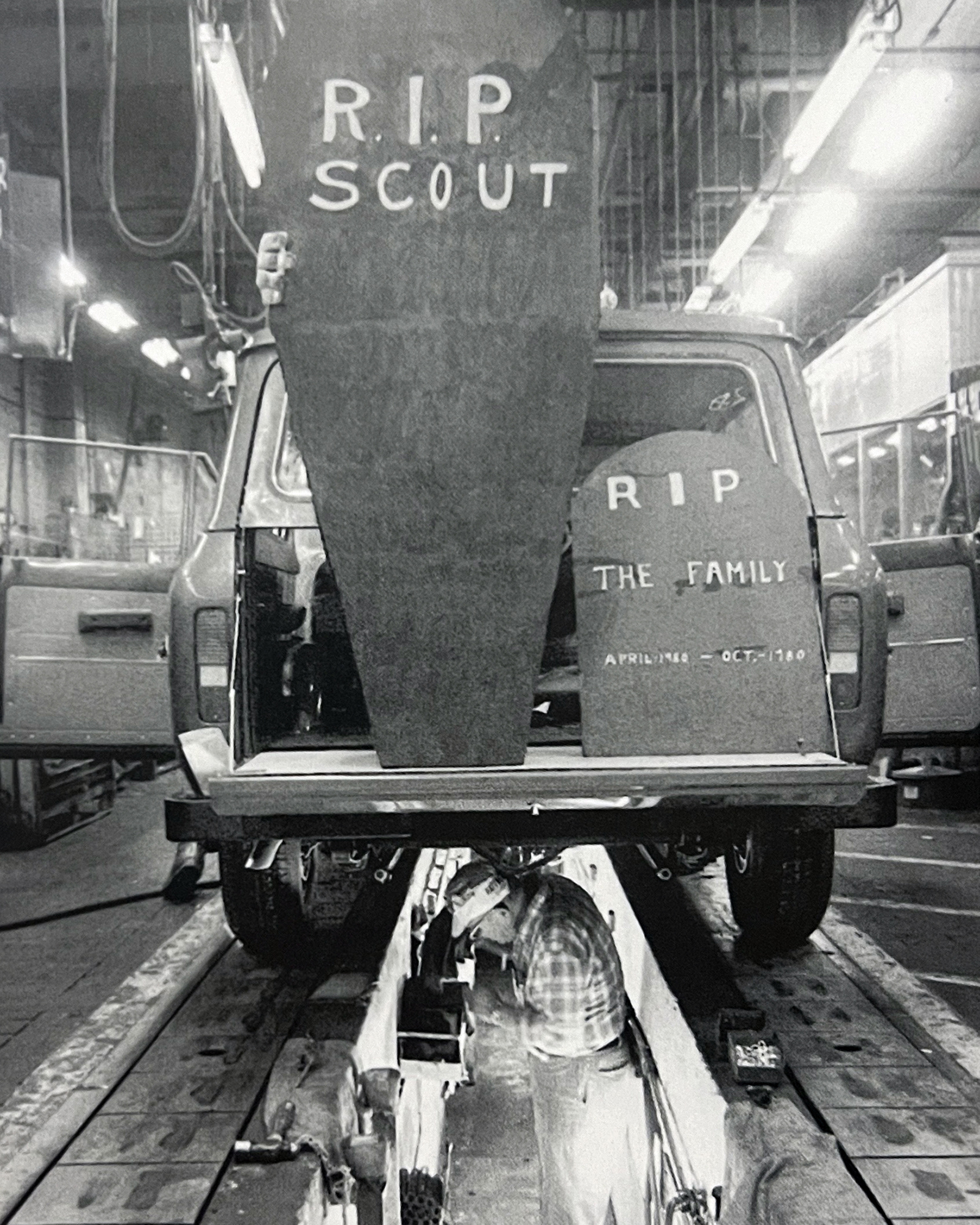
Come the start of 2019, the doors and fenders were fitted back onto the main body, and everything was finessed to line up correctly. After three layers of PPG primer, it was time for the first coats of red paint—and sound-deadening material for the inner tub.
By the end of 2019, the Last Scout was almost complete. Ancillaries were bolted on, and at Mike’s behest, Resurrection Rides also fitted carpeting—which was not originally available with the Deluxe interior.
A few weeks later, the engine was fired up for the first time in three years. Fortunately, it didn’t require too much coaxing to start. The glass went in, the plush front bench was refitted, and the badging was completed. The black grille was ditched in favor of a new silver one, as fitted to the Scout when it left the factory forty years prior.
One of the trickiest aspects of the restoration was the pinstriping. Forrest “Frosty” Harrington, another local lowan known for his skills, was called in to apply his magic. He also reproduced line workers’ faded signatures on less obvious parts of the Scout.
After four and a half years, the cosmetic restoration was complete, and Mike reintroduced the Scout to the outside world. “It has just gone from car show to car show, and Scout events, with very little on-road time,” he says.
“Currently, the engine is out and has just received new sleeves, pistons, rings, and bearings. And the injectors and injection pump have been gone through, to make sure they work properly.”
The straight-six diesel has now been reassembled, and in a few weeks, it will be back where it belongs in the engine bay. And the Last Scout will once again rumble into life and return to the public eye, looking as good as it did when it left the factory almost 45 years ago.
As with the Scout brand itself, a new beginning awaits…
Visit our Scout Community forum and join the conversation on this story.

